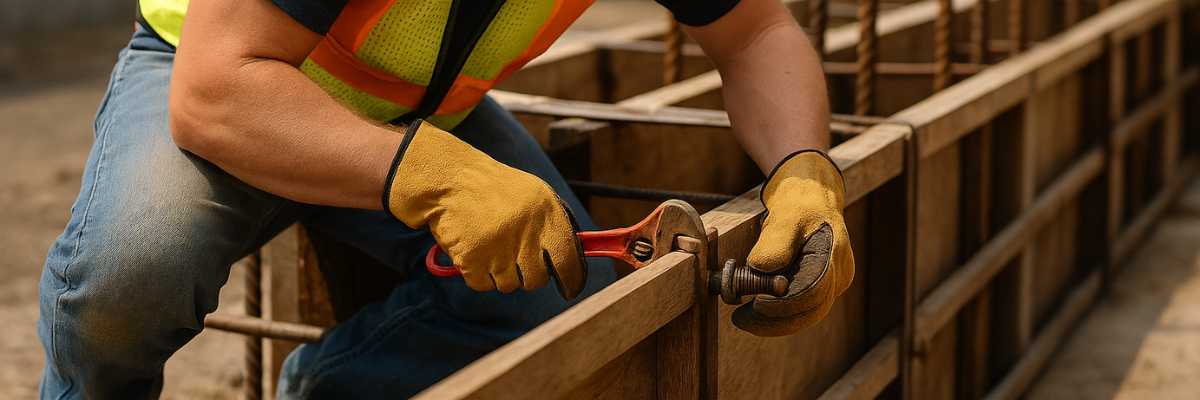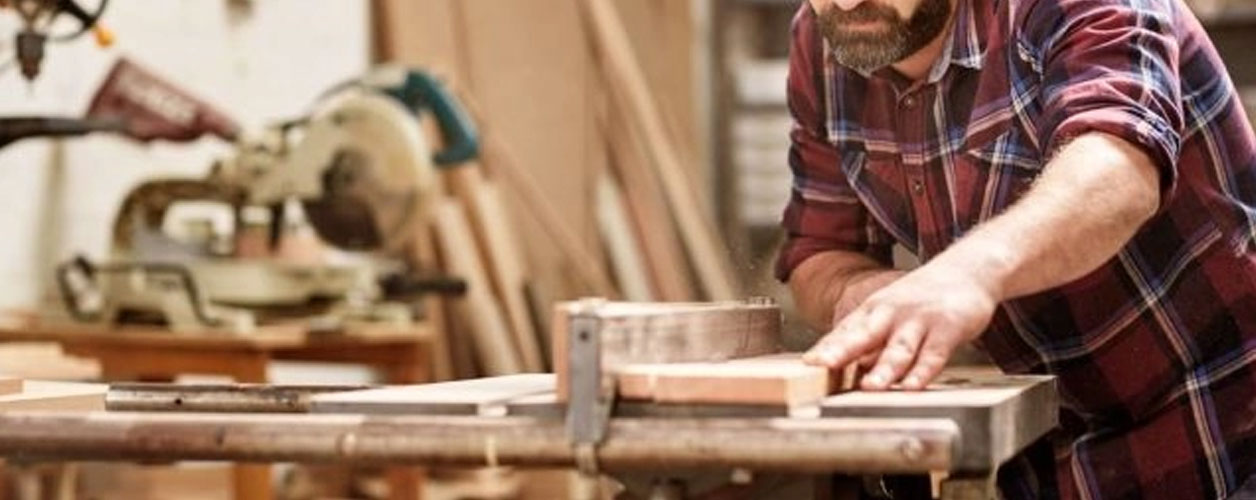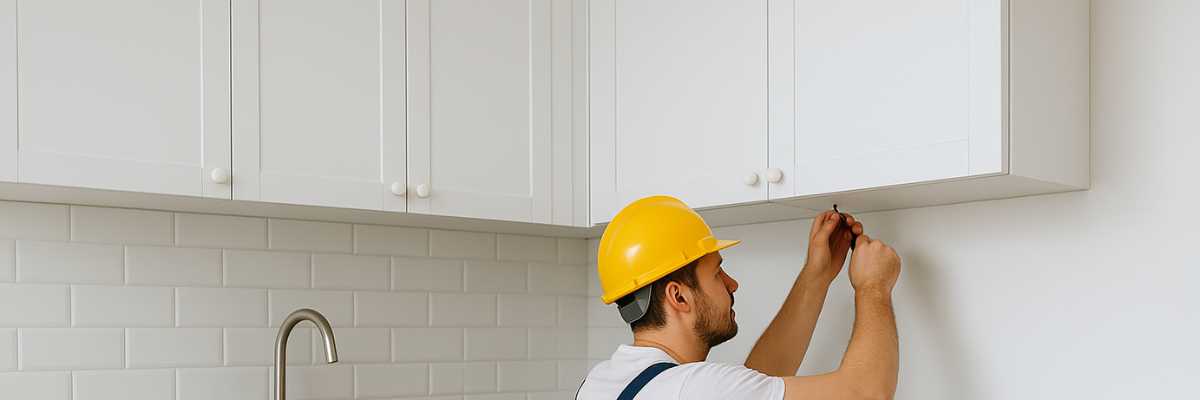Formwork is a crucial part of the building process to help in developing the structures since they act as a frame in which concrete is placed. It has a significant responsibility to offer the reliability of concrete structures, ranging from mere ground flooring to skyscraper buildings. Nonetheless, the details of the costs of formwork are important in deciding a project budget.
Depending on the types of materials, the scale of the project and the design introduced, formwork costs in Australia can greatly differ. In this ultimate guide on formwork, we will discuss the various types of formwork, the cost factors and tips on how to work within your budget. Whether you are hiring a formwork contractor or a carpentry company for formwork, this guide helps you make a knowledgeable formwork cost decision depending on the needs of your project and the overall budget you have at your disposal.
Overview: How Much is Formwork Per m2
Some factors influence the cost of formwork and they include the following: the type of formwork adopted, the size of the work and the geometrical intricacies of the job. Here’s an overview of the average costs you can expect:
Timber Formwork: $50 -$ 100 per square meter
Steel Formwork: $60-$120 per square meter
Aluminum Formwork: $80 – $150 per square meter
Plastic Formwork: $70 – $130 per square meter
These costs usually encompass the materials used as well as the expenses on installation but can again depend on how individual, big and specific the project is.
Types of Formwork and Their Costs
1. Timber Formwork:
Cost: Broadly it falls in the range of $50 -$100 per square meter.
Details: Timber formwork is probably one of the earliest and most conventional methods of developing concrete structures. Easy to use and rather cheap which allows for application for different objects of any size. Nevertheless, it entails a higher level of effort, and the structures produced can be less lasting when compared to structures made from other types of material. Timber formwork is usually applied in small construction or where the magnitude and shapes of the pieces do not have to be precise.
2. Steel Formwork:
Cost: $60 -$120 per square meter.
Details: Steel formwork brings high durability in use; the facility can be reused; hence steel formwork is suitable for large constructions. It is best used to provide a well-defined and repetitive form and is widely applied to the construction of commercial and industrial buildings. The initial cost, however, may be slightly higher than that of disposable syringe pumps, but these systems may prove cost-effective in the long run because of their reusability.
3. Aluminum Formwork:
Cost: $80-$150 per square meter.
Details: Aluminum formwork is lightweight and the handlers can easily maneuver it around as well as perform adjustments when needed. It is frequently utilized in the construction of high-rise buildings because of its strong characteristics and ease of installation. Aluminum formworks may cost more initially than timber ones but they are quite reusable and if large or repeated projects are being carried out, they can be quite cheaper.
4. Plastic Formwork:
Cost: $70 – $130 per square meter.
Details: It can be reused many times and is relatively lighter in weight as compared to steel formwork and in addition is easier to clean. It is generally applied with smaller residential structures or when it is necessary to create several intricate shapes. Although the cost is not too high, some of its pros include its usability to be reused and it is easy to handle especially for some applications. Unlike timber, steel, and aluminium, plastic formwork is less frequently used, yet it may be beneficial for certain projects’ requirements.
Factors Influencing Formwork Costs
Several factors can impact the overall cost of formwork, including:
1. Type of Formwork: Depending on the kind of formwork adopted the expenses will greatly vary. One of the major costs affecting the choice of timber is its cost; timber is cheaper but it is not as durable or reusable as steel, aluminum or plastic. Therefore whilst steel and aluminum are more durable, reusable and environmentally friendly, they are costly in the initial stages. It is important to use formwork that will depend on the need of the project, cost and even the rough look that is desired in the final construction.
2. Project Size and Complexity: The size and complexity of the project are other factors that have a significant influence on the overall cost of formwork. Thus, the costs will be higher for those projects that have more extensive formwork needs in the process of construction. Furthermore, where the structure outline is complicated or the structure form is unconventionally shaped, it may be difficult to arrange for formwork making the costs higher due to material or labour.
3. Labour Costs: Costs that are likely to be incurred including labour costs of installing the formwork vary depending on the level of the work required and the area. Projects that involve machining work or take longer to install will most of the time demand high labour costs. In addition, the time required to install as well as demobilise formwork is an influential parameter when it comes to cost considerations.
4. Duration of Use: Depending on the number of days the formwork will be needed it will affect the costs. Where the formwork is required to be in place for an extended period further costs may include rental costs, maintenance, and deterioration of the formwork. Non-recurring applications have the potential to present different cost parameters from those of long-term or repeated-use commuting projects.
5. Geographical Location: There are possibilities that the cost of formwork may differ from place to place depending on the rates of wages of workers, cost of material and transportation. Areas of high living standards make the prices of raw materials and labour to be relatively high. Also, accessing local formwork material and contractors may influence one’s general cost.
6. Extension or Local Modification: Complex geometries or additional features added to custom formwork solutions can cause added costs. Customization also takes time to design and adds costs to manufacturing hence is likely to increase the costs of material as well as labour. When it comes to mere project requirements, always expect additional costs especially if your need is more specific.
Framing Carpentry: Cost Breakdown Example
To provide a clearer picture, here’s a cost breakdown for a typical formwork project:
1. Budget-Friendly Option:
Formwork Type: Timber Formwork
Cost: In detail, there are distinctions in price per square meter where $50 qualifies as a basic price per square meter.
Area: 100 square meters
Total Material Cost: $5,000
Installation Cost: $2,000
Total Cost: $7,000
2. Mid-Range Option:
Formwork Type: Steel Formwork
Cost: It costs about $ 80 per square meter to build a house.
Area: 100 square meters
Total Material Cost: $8,000
Installation Cost: $2,500
Total Cost: $10,500
3. High-End Option:
Formwork Type: Aluminum Formwork
Cost: It will cost not less than $120 per square meter.
Area: 100 square meters
Total Material Cost: $12,000
Installation Cost: $3,000
Total Cost: $15,000
How to Reduce Formwork Cost?
1. Anticipation: It is possible to avoid formwork costs if due attention is paid to planning for the project. Analyze the project requirements by size, complexity and duration to define which of the three types is most suitable for a certain project. Appropriate planning can reduce many cost factors and in this way, the optimum prerequisite for a chosen formwork concept is in harmony with the corresponding budget.
2. Comparison Shopping: Get different quotes from different suppliers and contractors to try and have a comparison on which one to choose based on the price. Make sure that the quotes comprise all the aspects of the project whether it is material costs, labour costs or any other. This assists you in making the right decision so that you don’t end up paying more for a service.
3. Accessibility: This calls for the selection of formwork materials that can be easily accessed if a large project is being undertaken or where the same formwork is frequently used. For instance, steel and aluminium used in the construction of formwork are highly reusable and hence cost-effective in the long run. Purchasing reusable formworks for construction projects is more advantageous in the long run.
4. Explore rental options: For projects that may take a short period or projects that do not require constant use of the materials, it is advisable to rent the formwork. Some materials can be rented, which will save costs of purchasing them and storing them since they would not be used most of the time.
5. Be mindful of extra expenses to expect while using formwork: Setting up the formwork, maintaining it and taking it down also requires some costs that should be expected. Unfortunately, sometimes expenses outside the project arise and may cause the project to go over the set budget; this is where having a contingency fund is useful.
6. Using High-Quality Formwork: Although there may be a tendency to use cheaper forms, it is more beneficial to spend more when buying formwork as it may result in lasting longer. The quality of the materials used and the work done when constructing a given project can contribute positively to the outcome as well as have less risk of having to be redone.
Conclusion
The formwork plays a significant role in the construction and acts as a concrete frame. Framing carpenters assist in the determination of the sturdiness and accuracy of frameworks. It is considered crucial to determine the cost of various types of formwork to be able to have an understanding of how the costs are going to be allocated to ensure that the formwork is properly constructed. No matter what choice of timber, steel, aluminium, or plastic formwork, one should make a decision based on specific project conditions and cost.
Therefore, with prior planning, comparison of quotations, and taking into account some factors such as reusability as well as hiring, you will be able to control formwork costs to complete a successful construction project.
The key areas of focus are to maximize profits with investment in quality materials and minimize the unseen costs that might cause your project to fail or be over budget. Nevertheless, formwork can offer construction requirement support and improve work success rate if approached in the right way.








